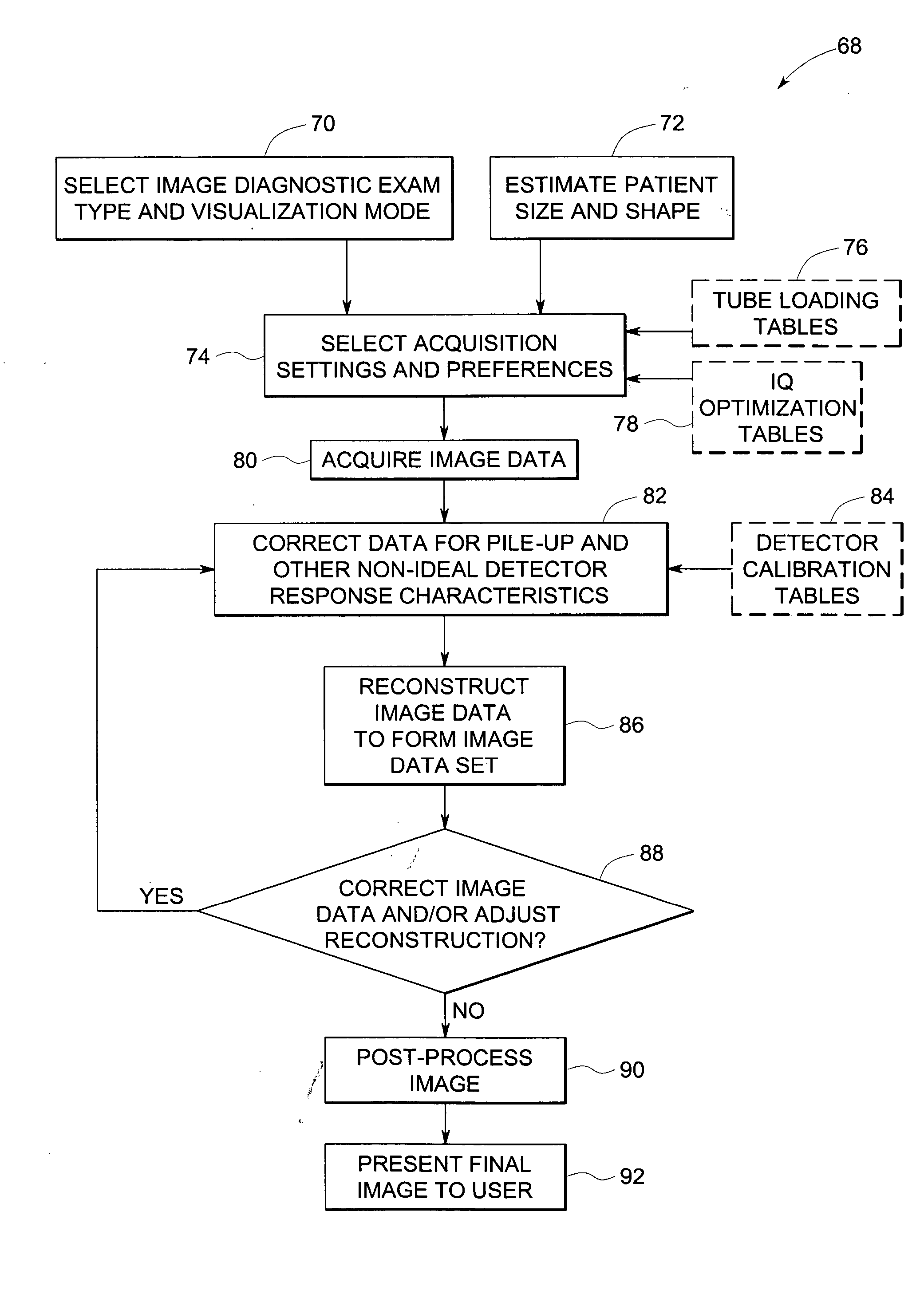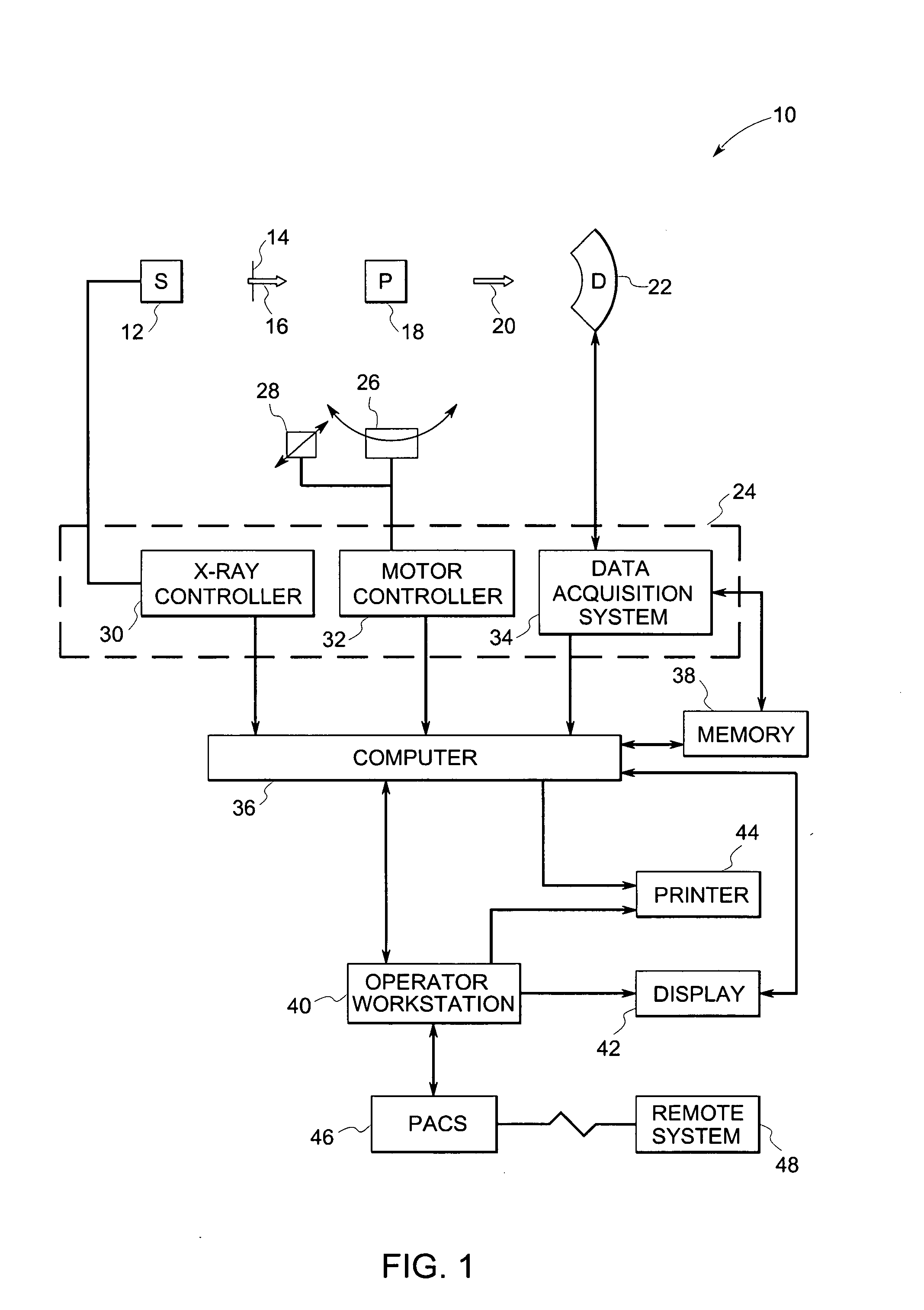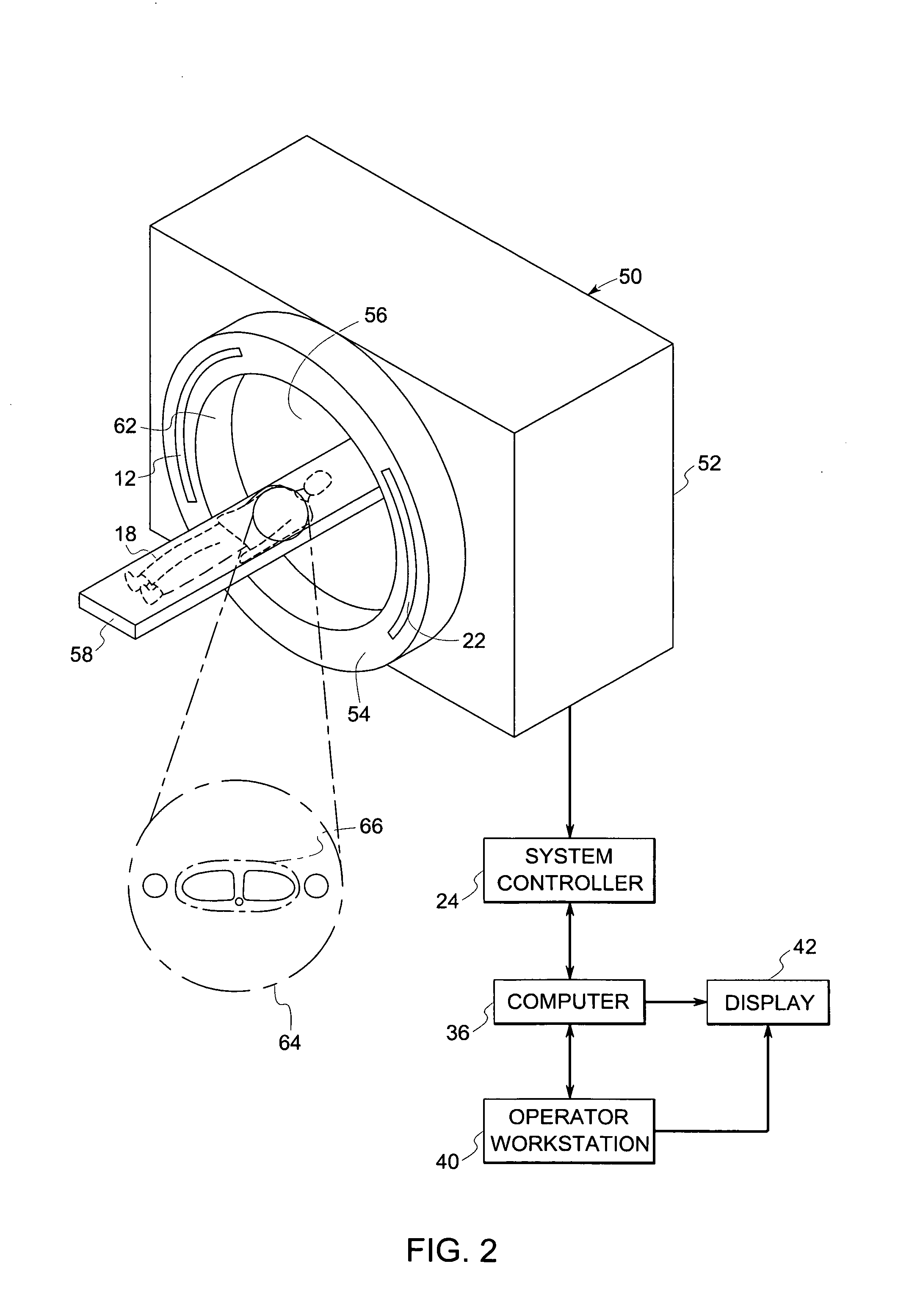Adaptable energy discriminating computed tomography system
a computed tomography and energy discrimination technology, applied in the field of energy discrimination computed tomography (ct) system, can solve the problems of detector saturation, type of detectors that cannot count at the x-ray photon flux rate typically encountered, and inability to provide data or feedback as to the number and/or energy of photons detected, etc., to achieve the effect of enhancing image quality
- Summary
- Abstract
- Description
- Claims
- Application Information
AI Technical Summary
Benefits of technology
Problems solved by technology
Method used
Image
Examples
Embodiment Construction
[0017]FIG. 1 is a block diagram showing an imaging system 10 for acquiring and processing image data in accordance with the present technique. In the illustrated embodiment, the system 10 is a computed tomography (CT) system designed to acquire X-ray projection data, to reconstruct the projection data into an image, and to process the image data for display and analysis in accordance with the present technique. In the embodiment illustrated in FIG. 1, the imaging system 10 includes a source of X-ray radiation 12. In one exemplary embodiment, the source of X-ray radiation 12 is an X-ray tube. The source of X-ray radiation 12 may include thermionic or solid-state electron emitters directed at an anode to generate X-rays or, indeed, any other emitter capable of generating X-rays having a spectrum and energy useful for imaging a desired object. Examples of suitable electron emitters include tungsten filament, tungsten plate, field emitter, thermal field emitter, dispenser cathode, therm...
PUM
 Login to View More
Login to View More Abstract
Description
Claims
Application Information
 Login to View More
Login to View More - R&D
- Intellectual Property
- Life Sciences
- Materials
- Tech Scout
- Unparalleled Data Quality
- Higher Quality Content
- 60% Fewer Hallucinations
Browse by: Latest US Patents, China's latest patents, Technical Efficacy Thesaurus, Application Domain, Technology Topic, Popular Technical Reports.
© 2025 PatSnap. All rights reserved.Legal|Privacy policy|Modern Slavery Act Transparency Statement|Sitemap|About US| Contact US: help@patsnap.com



